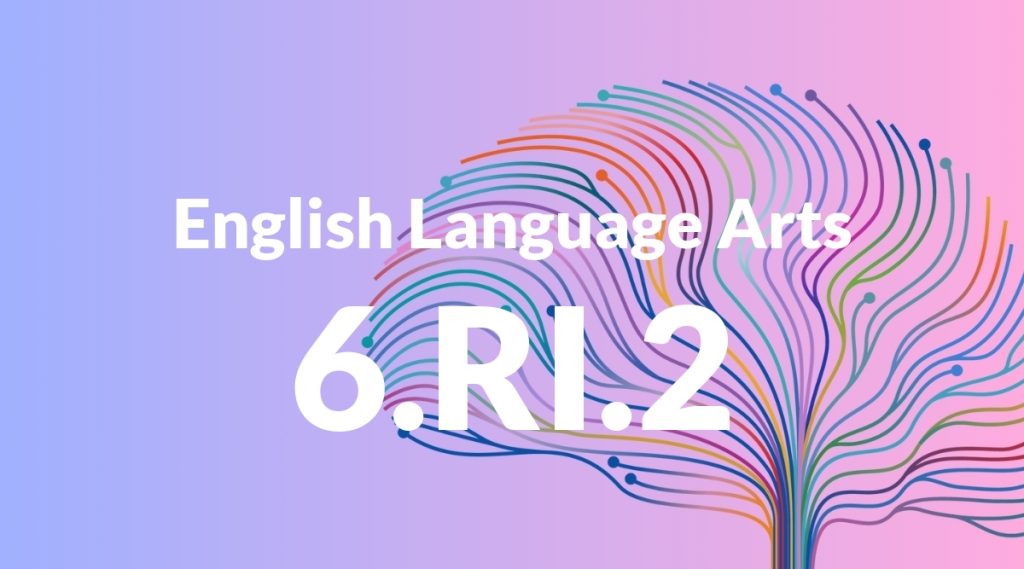Standard: 6.RI.2 – Determine a central idea of a text and how it is conveyed through particular details; provide a summary of the text distinct from personal opinions or judgments.
Grade level: Grade 6
Subject: English Language Arts
Domain: Reading: Informational Text
Teacher Overview
This standard focuses on helping students identify the central idea of an informational text and understand how it is supported by specific details. It also emphasizes the importance of creating objective summaries, free from personal opinions or judgments. Mastery of this standard is crucial for developing critical reading and analytical skills, which are foundational for success in higher-grade levels and across various subjects. Students should have a foundation in identifying main ideas and supporting details in simpler texts, and be able to distinguish between factual information and personal opinions.
After mastering this standard, students will be better equipped to analyze complex texts, discern main ideas, and create concise, objective summaries. These skills are essential for advanced academic tasks and effective communication.
Common Misconception 1
A common misconception is that students may mistake minor details for the central idea. This happens because they might focus on interesting but less important pieces of information rather than the overarching theme.
Intervention 1
Use graphic organizers to help students visually separate main ideas from supporting details. Practice with a variety of texts to reinforce this skill.
Common Misconception 2
Another misconception is that students might include their personal opinions in summaries. This occurs because they may not fully understand the difference between summarizing objectively and expressing personal viewpoints.
Intervention 2
Provide students with examples of objective and subjective summaries. Engage them in exercises where they identify and correct summaries that include personal opinions.
Prerequisite Knowledge
Students should have basic comprehension skills, be able to identify the main idea and supporting details in simpler texts, and understand the difference between facts and opinions.
Subsequent Knowledge
Students will develop the ability to critically analyze more complex texts, distinguishing between main ideas and supporting details, and will improve their summarization skills, which are crucial for advanced reading and writing tasks.
Instructional Activities
- Use graphic organizers to map out the central idea and supporting details of a text.
- Practice summarizing short articles, focusing on excluding personal opinions.
- Group activities where students identify the main idea and details of a shared text.
- Interactive games that reinforce distinguishing between main ideas and minor details.
- Writing exercises that involve creating summaries of different types of informational texts.




